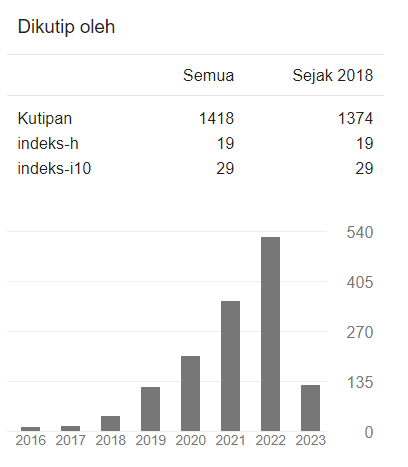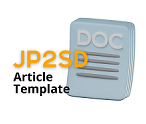Instilling And Shaping Religious Character In Madrasah Ibtidaiyyah
DOI:
https://doi.org/10.22219/jp2sd.v8i2.11884Keywords:
Religious character, Madrasah Ibtidaiyyah, studentsAbstract
This research is aimed at describing the imposing and shaping of religious character and describing the methods used in shaping religious character at Madrasa Ibtidaiyyah Tarbiyatus Shibyan Jadung Dungkek. This is a qualitative research whose data were obtained from observation, interview, and documentation. The data collected then analyzed by Miles and Huberman analysis model including four components namely data collection, data reduction, data display, and conclusion. This research resulted in findings that the imposing and shaping of personal and ritual religious character is supposed to not only involve family but also develop education partnership among family, school, and community. The methods carried out to impose and shape the character for the students are through exemplary, advice, supervision, and punishment. Religious character education must be integrated in all subject lessons taught at the MadrasahDownloads
References
Asmani, J. M. (2012). Panduan Internalisasi Pendidikan Karakter Di Sekolah (3rd ed.). Diva Press.
Hamid, A. (2017). Pendidikan Karakter Berbasis Pesantren (Pelajar dan Santri dalam Era IT & Cyber Culture) (1st ed.). Imtiyaz.
Koesoema, D. (2010). Pendidikan Karakter Strategi Mendidik Anak Di Zaman Global (2nd ed.).
Krauss, S. (2005). Development of The Muslim Religiousity-Personality Inventory for Measuring The Religiousity of Malaysian Muslim Youth. Universiti Putra Malaysia Kuala Lumpur.
Marzuki, M., & Haq, P. I. (2018). Penanaman Nilai-Nilai Karakter Religius Dan Karakter Kebangsaan di Madrasah Tsanawiyah Al Falah Jatinangor Sumedang. Jurnal Pendidikan Karakter, 8(1), 84–94. https://doi.org/10.21831/JPK.V8I1.21677
Miles, Matthew B and Huberman, A. M. (1992). Analisis Data Kualitatif. UI Press.
Mulyasa, E. (2016). Guru dalam Implementasi Kurikulum. Remaja Rosda Karya.
Nasional, K. P. (2010). Bahan Pelatihan Penguatan Metodologi Pembelajaran Berdasarkan Nilai-Nilai Budaya untuk Membentuk Daya Saing dan Karakter Bangsa: Pengembangan Pendidikan Budaya dan Karakter Bangsa. Kementerian Pendidikan Nasional, Badan Penelitian dan Pengembangan, Pusat Kurikulum.
Nasional, K. P. (2011). Panduan Pelaksanaan Pendidikan Karakter. Badan Penelitian Dan Pengembangan Pusat Kurikulum Dan Perbukuan.
Pemerintah Republik Indonesia. (2010). Kebijakan Nasional Pembangunan Karakter Bangsa Tahun 2010-2025.
Rokhmad, A. (2012). Radikalisme Islam Dan Upaya Deradikalisasi Paham Radikal. Walisongo: Jurnal Penelitian Sosial Keagamaan, 20(1), 79. https://doi.org/10.21580/ws.20.1.185
Sahlan, A. (2010). Mewujudkan Budaya Religius Di Sekolah: Upaya Mengembangkan PAI dari Teori ke Aksi. UIN-Maliki Press.
Sugiyono. (2014). Metode Penelitian Pendidikan (Pendekatan Kualitatif, Kualitatif dan R & D). Penerbit Alfabeta.
warsiyah. (2018). Muslim Youth Religiosity: With The References Of Gender Differences And Educational Environment. TARBIYA: Journal of Education in Muslim Society, 5(1), 19–29. https://doi.org/https://doi.org/10.15408/tjems.v5i1.7842
Wibowo, A. (2013). Manajemen Pendidikan Karakter Di Sekolah. Pustaka Pelajar.
Downloads
Published
Issue
Section
License
Authors who publish with Jurnal Pemikiran dan Pengembangan Sekolah Dasar (JP2SD) agree to the following terms:
- For all articles published in Jurnal Pemikiran dan Pengembangan Sekolah Dasar (JP2SD), copyright is retained by the authors. Authors give permission to the publisher to announce the work with conditions. When the manuscript is accepted for publication, the authors agree to automatic transfer of the publishing right to the publisher.
- Authors retain copyright and grant the journal right of first publication with the work simultaneously licensed under a Creative Commons Attribution-ShareAlike 4.0 International License that allows others to share the work with an acknowledgment of the work's authorship and initial publication in this journal.
- Authors are able to enter into separate, additional contractual arrangements for the non-exclusive distribution of the journal's published version of the work (e.g., post it to an institutional repository or publish it in a book), with an acknowledgment of its initial publication in this journal.
- Authors are permitted and encouraged to post their work online (e.g., in institutional repositories or on their website) prior to and during the submission process, as it can lead to productive exchanges, as well as earlier and greater citation of published work (See The Effect of Open Access).

This work is licensed under a Creative Commons Attribution-ShareAlike 4.0 International License.


















